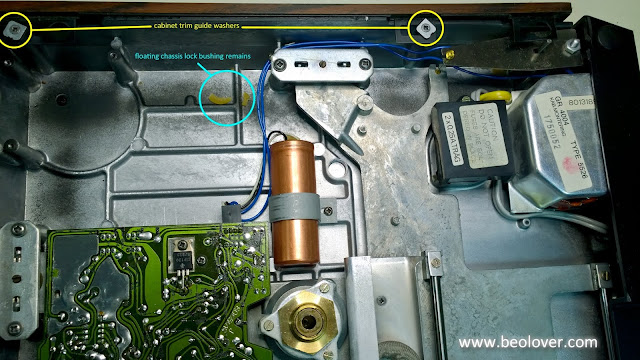That is definitely the case with this first unit. This has to be the most pristine Beogram 4004 I have encountered, if not the most pristine Beogram period. This turntable has been so well taken care of that I am amazed.
Let's take a look.
Look at the DIN phono plug and the AC power plug. How are those still so clean? They are like they were brand new!
I always remove the cabinet parts that will not be involved in any restoration work so they can be stored away safely until the work on this turntable is complete.
I hate to sound redundant but this unit is remarkable. Note: I was so tempted here to say "sound like a broken record" but that is too corny even for me.
I actually had opened this Beogram earlier and pulled the DC platter motor for restoration by Beolover. He recently posted that restoration on the blog here.
This picture finally shows that there is some deterioration in this 1978 turntable....the usual pieces of the floating chassis locking bushings. The plastic bushings B&O used on these turntables almost always dries out and breaks apart over the decades. Beolover makes 3D replacements for them so no worries about that. It is just a matter of cleaning the old pieces out of the cabinet.
A nice improvement B&O made on these Beogram 4004 turntables was to use metal guide washers for the cabinet trim. The earlier 4002 Beogram units have plastic washers that are almost always broken.
The components for the tangential arm assembly all look great.
The small rubber belt for the tangential arm drive pulley is broken but that is expected. I was going to change the belts anyway.
The black plastic tangential drive pulley looks to still be perfect. I will have to examine that closer once it comes time to start operating the Beogram. There could be some hairline cracks. We typically go ahead and change these pulleys to metal pulleys.
I can't wait to get this turntable back to playing records like it is used to.










No comments:
Post a Comment
Comments and suggestions are welcome!